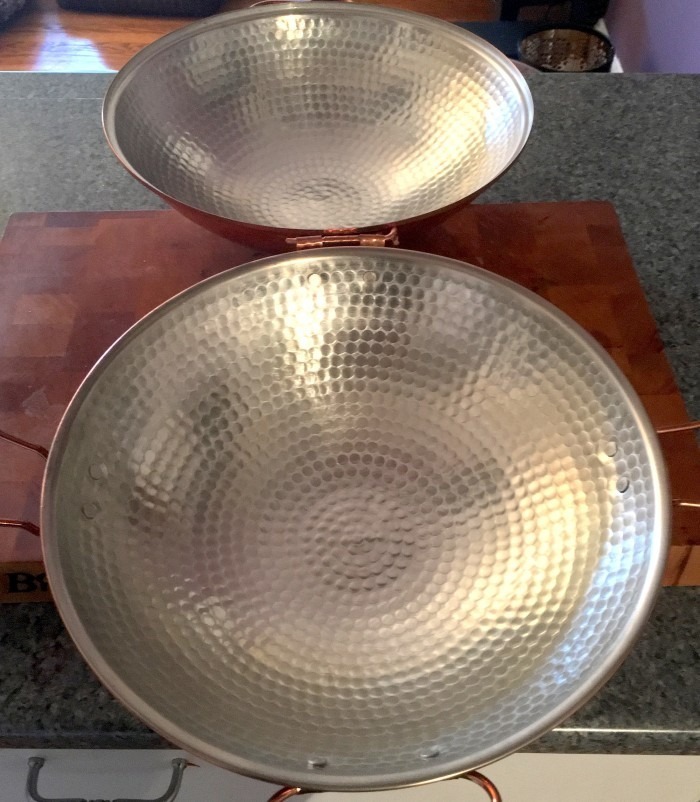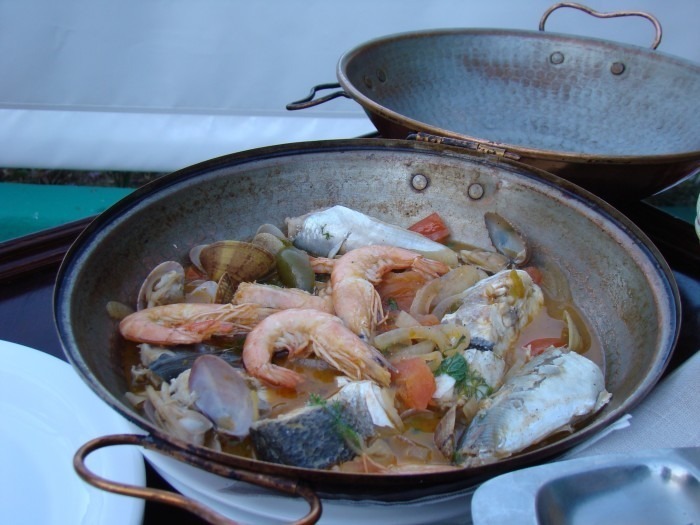Copper At Its Best: How To Use A Cataplana
We may receive a commission on purchases made from links.
I lose all impulse control when I'm in a kitchen-supply store. The myriad cooking vessels and specialized tools trigger all my consumer pressure points and send me into an aspirational frenzy. During one of these recent bouts, I discovered a beautiful, clam-shaped pan known as a cataplana. Oddly shaped, made of copper and featuring locking latches on the sides, I was thoroughly perplexed and inspired.
Cataplana refers to both a traditional southern Portuguese meat and seafood stew and the pot it is prepared in, like a North African tagine. The exact origins of the pot, much like the stew, are a bit murky, but it's thought to have originated during the 8th century under Moorish occupation. As both a vessel and an iconic dish, cataplana reflects the rich fishing community of the Algarve region, which shares coastline with the north Atlantic and the Gulf of Cadiz. Fishermen would use the vessel to haul ingredients and the daily catch, and then prepare their meals in the same pot directly over a fire.
There are stainless steel cataplana vessels available, but the best, classic versions are made of hammered copper. Copper conducts heat incredibly well, which makes it ideal for slow cooking on low heat. Shaped like a clam with two domed halves, the pot seals in moisture like a Dutch oven, encouraging a steaming effect inside the vessel. The latches on the side lock the dome closed, emulating a pressure cooker. The cataplana is essentially an uncanny combination of slow cooker or Dutch oven, tagine and modern pressure cooker.

The result is a pot whose shape and material are perfectly suited for cooking the fare local to the region: shellfish. There are many interpretations of cataplana, but traditional stews are prepared with a combination of clams and shredded pork or sausage in a rich tomato base. Like all great dishes, however, the key is to use ingredients fresh and native to the region. Mussels and spicy chorizo; squid, cockles, and cured ham; octopus and rabbit all are superb variations.
I opted for a spicy chorizo, squid and mussel version using tomatoes from the tail end of the season at the farmers' market. Super-fresh shellfish is integral as the limited number of ingredients foregrounds the delicate flavor profiles of the seafood. The preparation of the stew itself is quite simple and differs very little from how you might prepare mussels in white wine or other rustic stews and braises. However, preparation of the pot is another matter entirely.
As I learned from Diana Gringle, the buyer at Sur La Table responsible for sourcing the cataplana from a small factory in Portugal, all copper pots are typically coated in a heavy lacquer finish to prevent tarnishing during stocking and shipping. Before using, this lacquer must be removed, otherwise the pot will tarnish when placed over heat. It's not necessarily harmful to use the pot without removing this coating since none of the lacquer is on the inside of the vessel and therefore won't come in contact with food. But why risk it? And do you really want a chemical layer on your pot?
The suggested cleaning method is to boil the pot in a mixture of water and baking soda until the lacquer seeps off, but I don't own a pot large enough to submerge the cataplana in, and you can't boil water in the bathtub. I moved to plan B, which meant tediously scrubbing the pot with acetone nail polish and cotton balls. The lacquer eventually sloughed off, and after a thorough wash in warm, soapy water, the cataplana was ready for use.
Copper pots are beloved for a reason, and the cataplana was no exception. It cooked evenly without any hot spots, and using an oven mitt, I was able to easily latch the dome closed. I chose to place the pot directly on the burner (on low heat only), but you can easily prop it on a wok ring over the burner as well. The cataplana stew was fresh and flavorful, and the shellfish were some of the most plump and succulent I've ever made in similar dishes (recipe below).
The cataplana was easy enough to clean, but I recommend using copper cleaner or polish to keep it looking pristine. The pan was a refreshing combination of form and function, and easily the most eye-catching addition to my kitchen.

Chorizo and Mussels Cataplana Stew
Ingredients
*Before cooking, ensure that your cataplana pot is free of lacquer and completely dry.
Directions

